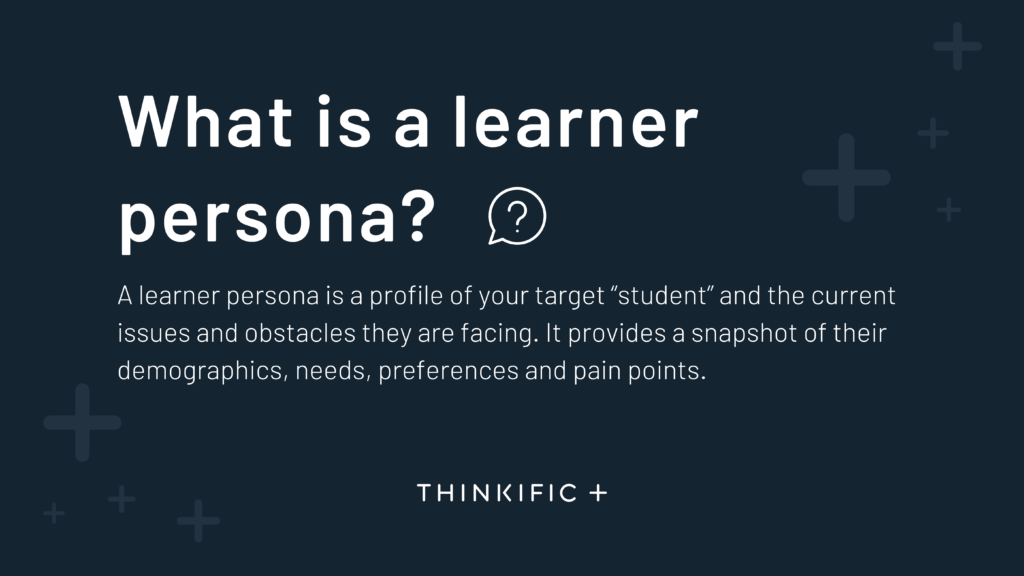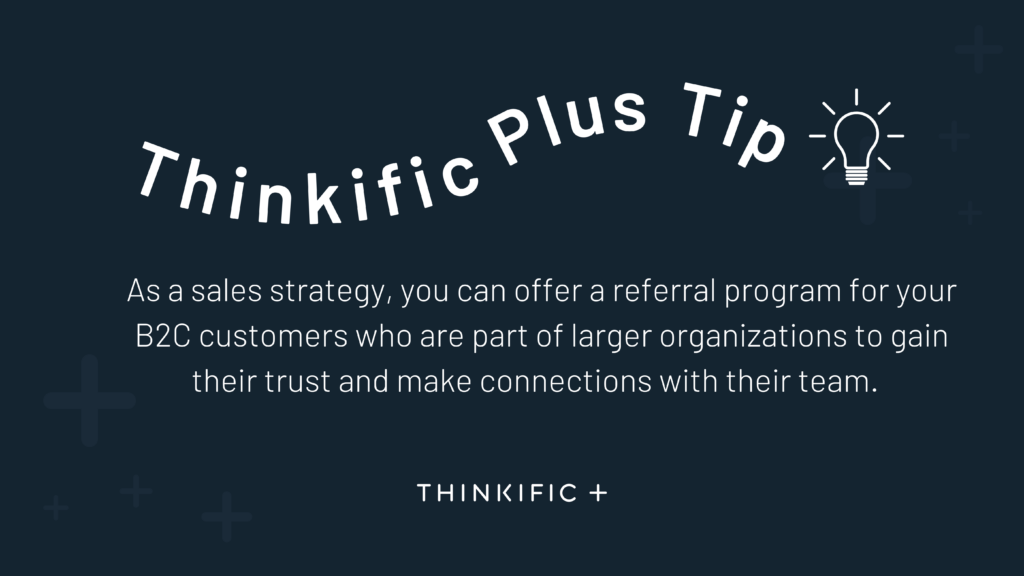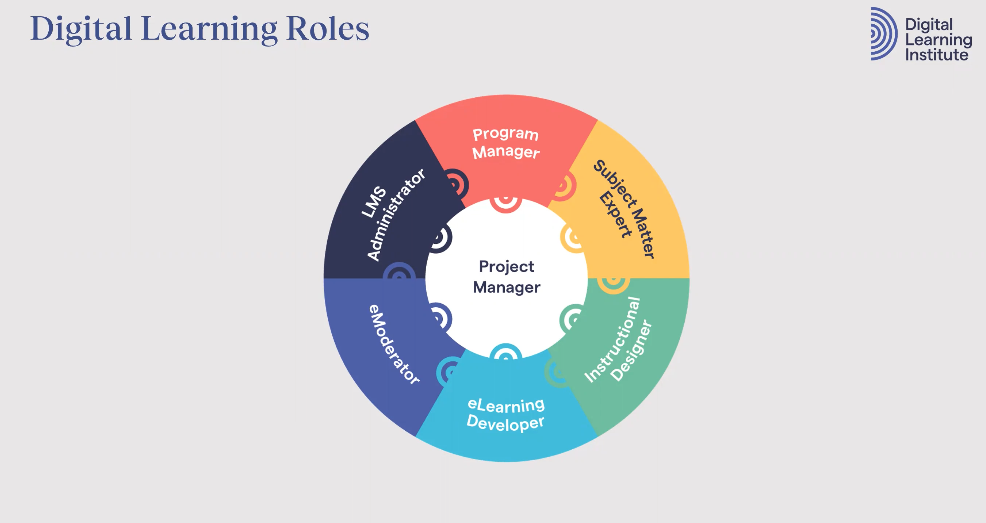If you are in the business of selling online courses and learning experiences directly to consumers, there is an opportunity for you to scale your business and significantly increase your revenue by offering online learning experiences in the B2B space.
Read this blog post to learn how to build a quality online learning experience for B2B clients and map out the key steps to successfully build, pitch, and sell your online courses.
You will learn:
- What the transition from a B2C to a B2B selling model looks like
- How to identify your learner persona to enter the B2B market
- How to craft your buyer persona to pitch your online courses
- How to create a course curriculum for B2B clients
- Key considerations for building a B2B online learning experience
The transition from a B2C to a B2B selling model
When making the transition from a B2C to a B2B selling model when it comes to selling your online courses, you will have to do some work to identify not only who your learners are, but who your buyers are. To succeed in the B2B space, you will also have to alter your course curriculum and learning experience to suit your client’s needs. You will want to clearly identify:
- Your Learner Persona: Who will be learning and taking your courses at the organization?
- Your Buyer Persona: Who is your client and “middleman” at the organization and what will motivate them to purchase?
- Your Curriculum: What you will be teaching and what online learning experiences can you create for a B2B client?
- The Learning Experience: What will the learning experience need to look like to achieve your client’s desired results?
Learn more: The B2B leap and successfully transitioning from selling B2C to B2B
Identifying Your Learner Persona
Initially, selling your online learning experiences directly to consumers can help you as a strategy to enter the online learning market and understand your “learner persona”.

When engaging in digital learning design for a B2B client, you should think about your learner persona and the needs of the learner you are building a course for. There are core considerations you need to be conscious of and existing digital learning preferences for larger organizations:
- Has the “learner” taken an online course before?
- What did they like?
- What did they dislike?
- What kind of learning do they prefer? For example…
- Self-paced learning
- Community-based learning
- Social learning
It’s very important to gain clarity on your learner persona before you approach your B2B clients to make a pitch. Some other key considerations you might want to consider before approaching your “middleman” (representative that will be making the purchase) at the organization are:
- Demographics: Where is their team located? Do they have a hybrid or remote work model?
- Technology Considerations such as digital literacy challenges and access to technology.
- Pain points and what is driving the client to attain this course for their organization.
- Drivers and motivators for learners such as career progression and pay rises.
- Digital Learning Preferences (Self-paced, cohort-based).
- Barriers To Learning.
One key way that you can gain more information about your learner persona is by using learning analytics from your current B2C customers to identify what your “learners” challenges are so that you can provide and perfect a solution: Is there something they are constantly struggling with when it comes to your subject matter or learning?
Once you identify your target learner’s key challenges and pain points, you can use the insights you gain from the story that your LMS’ reporting system is telling you to build a value proposition for your B2B client and continue to improve the learning experience for your customers.
Accessing B2B Clients through your individual learners
You can open up opportunities for your business to access B2B clients by creating effective learning experiences for your B2C customers.
By keeping a close eye on your B2C customers’ learning journey and progress with your courses, you will be able to gain a clear sense of their pain points, perfect your learning experience, and guide them through their desired transformation in a powerful way.
You can bring the stories of your customers who achieve their desired results and transformation back to your corporate clients to make your pitch.

Crafting your buyer persona
Your “buyer persona” is a snapshot of the person with who you are ultimately going to be having sales conversations within the larger organizations you are looking to sell your online learning experiences.
To get clarity on who your buyer persona is, you will want to make sure you have a clear sense of:
- The buyer and company’s demographics
- The business problem they are looking to solve
- Their goals for the online learning experience: Are there any specific Key Performance Indicators they are looking for?
The B2B selling process is very much a consultative sales process with the buyer. Your goal should be to get underneath what their pain points are so that you can start to build up your value proposition and learner transformation story.
Keep in mind that in the B2B sales process, there are two stakeholders that you need to be really conscious of: the buyer and the instructional designers at the organization.
Within larger organizations, there might be a team member or an entire team that is dedicated to digital learning and instructional learning design that has different standards for online courses and learning outcomes than your buyer. You will want to ensure that your courses are up to everyone’s standards to showcase their value to the organization.
Some examples of KPIs stakeholders at the organization are looking for are:
- Reducing training costs.
- Reducing customer support requests and inquiries.
- Reducing onboarding times.
- Increased training completion rates.
Creating a course curriculum for B2B clients
It’s important to note that when creating courses for B2B clients, you will be working with an “off-the-shelf” model as your clients will most likely be looking for customized learning experiences.
You will initially want to bring your course to market based on the market research you have done. When you start working with larger B2B clients, you will quickly realize that there will be much more of a consultative approach to crafting your course curriculum and content.
The “off-the-shelf” curriculum model
It’s good to offer a standardized course with the option to customize it when pitching to clients in the B2B space as your client might want to include some specific content in your course that is specific to their organization, and might even want to introduce some of their own technology into the online learning experience as well.
The “off-the-shelf” model is a scalable one that will help you build a recurring revenue stream for your business in the B2B space once you build your first “customizable” course.
Learn more: Practical Tips for Creating Profitable B2B Online Courses
Crafting the B2B Online Learning Experience
You will also want to be conscious of the type of content that you are selling to B2B clients. For example, when working with larger organizations in the regulation and compliance space or serving any kind of technical content, you will need to go through a more sophisticated design process and adapt your content to the regulatory environment and requirements that you are working within.
You will also need to consider how deep the learning in your course needs to go.
- Are you just looking to kind of develop an awareness of concepts?
- Are you in an area of behavioural change education like leadership development that needs deep levels of learning?
If you’re in a space that requires deep levels of learning, your B2B clients will generally want your online course to integrate seamlessly into the existing programs they already have. When working with the learning and development department at your client’s organization, you need to be really conscious that they already potentially have an existing offer or “subject matter expert” in the space you are teaching in.
Remain conscious of politics at play that you need to be careful about when it comes to how you manage your relationship with subject matter experts at the organization. You will want to successfully “onboard” them so that they can work with you to integrate their expertise into what you already offer. Doing this will help you ingrain yourself within the organization.
Take some time to get acquainted with the learning and development team itself and some of the existing roles in the wider team you might have to work with such as instruction designers, budget holders, program managers and developers.

Finally, if there is an element of adapting the course content, it’s important that you clarify what role you are going to play when you’re working with B2B clients. If you’re working with a large B2B client and they’re asking you to adjust your content, curriculum or your digital learning experience to suit what they’re looking for, it’s really important that you have a process for working with them.
You can leverage the technology of Thinkific Plus in the B2B landscape to pull advanced analytics and data for your clients as their students are going through your course so that they are able to track their return on investment.
Learn how to market, price, and sell your courses to B2B customers in this free course:







